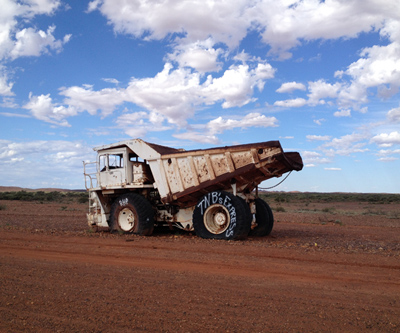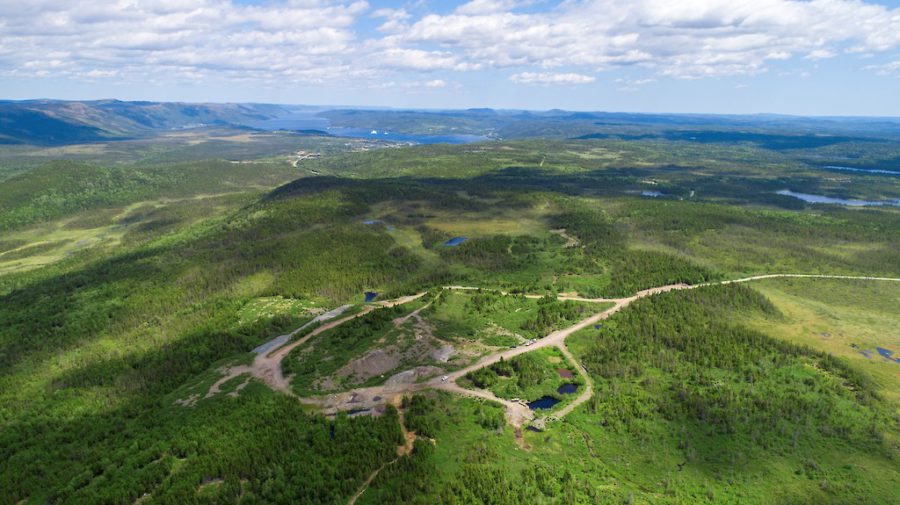Iron ore price drop near record low ‘self imposed’

The price of iron ore fell to within shouting distance of all-time lows on Wednesday as worries about oversupply continue to dog the market and steel prices in top consumer China fall to record lows.
On Wednesday the benchmark 62% Fe import price including freight and insurance at the Chinese port of Tianjin slid 0.8% to $48.30 a tonne, the lowest since July 8 and down 7.6% in a month. Today’s peg is also the second lowest on record since The SteelIndex began tracking the spot price in November 2008. Iron ore traded at $44.10 a tonne on July 8 this year, before bouncing back the next day.
China forges 46% of the world’s steel and consumes for more than 75% of the world’s seaborne iron ore trade, but years of overproduction and unprofitability at the country’s giant state-owned mills have seen steel prices drop to record lows. Shanghai rebar prices dropped to a record low on Wednesday with the most active May futures contract exchanging hands for 1,774 yuan or just under $280 a tonne.
While a slowdown in China can take some of the blame, a flood of new supply is the main factor behind the decline from record highs above $190 a tonne hit in February 2011.
The big three producers – Vale, Rio Tinto and BHP Billiton – have been following a scorched earth policy of raising output and slashing costs to weather low prices and push out competitors.
But the strategy has come in for severe criticism with Australian politicians and competitors even going so far as to suggest an anti-trust investigation should be launched into the Rio and BHP.
On Wednesday the CEO of struggling North American producer Cliffs Resources became the latest to heap scorn on the strategy of the Australian giants.
Lourenco Goncalves told Bloomberg in a phone interview from the company’s headquarters in Cleveland, Ohio that the majors are living in “an imaginary world”:
“The cost-cutting is not even close to offset their loss in revenues. My entire point: the loss in revenue, totally avoidable. Self-imposed. Self-inflicted.
“In their imaginary world, 60 million tons of capacity will go offline this year, then another 125 million tons of capacity will go out of commission next year.
“That’s not the case. Everyone is driving down costs, everyone is trying to continue to cope. You’re not seeing any meaningful number of tons going offline.”
Goncalves took the helm at the 34 million tonnes per year miner, the largest in North American, in 2014 after shareholders staged a boardroom coup. Cliffs (NYSE:CLF), worth $474 million on the New York Stock Exchange on Wednesday, is a shadow of its former self with the stock down 97% from its peak in 2011.
Last month week top producer Vale announced record third quarter shipments of 88 million tonnes despite idling 13 million tonnes worth of high cost operations. More astonishing is the fact that the Rio de Janeiro-based company was able to reduce cash costs to just $12.70 per tonne (it’s in the high teens at Rio Tinto and BHP).
Vale is not stopping there, its 90 million tonnes per year S11D expansion in the Amazon is 75% complete and according to the company that could push costs below $10 a tonne.
After a near 15% year-on-year surge in output in the third quarter Rio is well on its way to reach 360 million tonnes in the next few years, while BHP Billiton which grew production 6% last quarter is on target to grow capacity to 290 million tonnes per year some time during 2017. World number four producer Fortescue Metals added 5% to its targeted output hitting a rate 165 million tonnes per year in July.
Unlisted miner Hancock Prospecting’s Roy Hill is on the verge of shipping its first ore from its Pilbara mine which has a 55-million tonnes-a-year capacity. That would place it within shouting distance of Anglo American which is predicting 53 million tonnes for this year before its Minas Rio mine ramps up to capacity of 26 million tonnes in 2016–2017.
Image of roadside dump truck wreck between Mount Augustus and Tom Price by Robyn Jay
More News
{{ commodity.name }}
{{ post.title }}
{{ post.date }}


7 Comments
Ray M
If the Chinese are flooded with iron ore why do they keep accepting more and more imported tonnages which they have to pay for. There must be point where they have too much to process. They cause the producers to reduce their production costs making their own lower quality iron ore even less competitive. Will they suddenly stop imports? Anybody know the answers.
PaoloUSA
The China 13th Five Years plan includes “internationalization” as one of the objectives. Chinese mill are flooding the international market with cheap supplies and acquiring market share. Local mills internationally cannot cope and several will go out of business leaving the Chinese to control a pretty good market share. Eventually they will raise prices due to the necessity to comply with fair competition practices (mostly related to the environment), but they will have already a market share.
Our Aussie friends have not only shot themselves in a foot, they have triggered a worldwide crisis of the steel industry as well.
Prediction of growth of the Chinese market were grossly overestimated, based on the famous McKinsey report, if we add to this the strategy of fighting for a “non-existing” increasing market share (the original excuse was to push part of the Chinese producers out of the market) at 1/3 of the price, we can see that the whole industry is pretty much suffering from some form of “corporate dementia”, outdated 1980s business model with an additional condiment of no sustainability.
It is amazing how the slow down in Chinese economy to 6-7% GDP has been blamed first and recently addressed as “good news” by the mining industry. I believe that the real culprit are the investors that still buy these BS.
Altaf
China can afford anything. Any one with huge trade surplus and huge reserves can afford to play the game on their terms. Over the decades, they have convinced global exporters that they can go ahead with massive expansions with China as target country. The global producers played the game and now they have to fight it over market share.
Even if China has to pay for imports which they don’t require, what are they losing? With low cost inputs, their steel gets cheaper by the day which pushes out high cost global steel industry. Even if they have to pay few billion for imports that are not required, China has a huge reserves.
If they are importing cheaper resources which don’t have shelf life, it is good for their mineral security. They can make islands and mountains with cheap imported ore.
China don’t have to stop importing. At some point, other than big three will stop producing and after that big two and then big one will be left. At that point the game turns interesting. Can china import what big one produces? If yes, China still wins. The probability is as great as we will take our next breath.
aussie miner
There was talk of India going to be the next big importer of Iron Ore from Australia that would be bigger than China”s intake.What happened about that,does anybody know?
MINING.com Editors
It’s coming off such a low base it would take many many years to match China if at all – Frik
A bit of background:
India’s imports were a mere 1.2 million tonne in 2013 and 3.1 million tonnes last year.
While these numbers are negligible compared to Chinese imports which grew to a record in 2014 above 900 million tonnes and have continued to expand in 2015, only five years ago Indian exported roughly 120 million tonnes per year – mostly to China.
The collapse in exports came amid a government crackdown commencing in 2010 to root out corruption, environmental degradation and transform an industry thoroughly in need of modernization. Some of the shuttered mines in Odisha, Goa and Karnataka are now slowly coming back on stream.
India’s steel ministry announced in December that state owned mining company National Mineral Development Corp will raise its iron ore output to over 75 million tonnes per annum by the 2018-2019 financial year. The target for 2020-2021 is more than 100 million tonnes per year.
That’s up from only 30 million in its current fiscal year. The production surge is required to push the India’s steel production rate to a long term target of 300 million tonnes by 2025, compared to 83 million tonnes today.
That would require production of 500 million tonnes of iron ore annually.
norcal2
What is glaringingly missing in this article is global economics, aluminum, copper, lead, zinc gold etc have all fallen…no conspiracy theory needed its economics….
And so the dollar has grown against the Yuan, and other currencies which makes American products more expensive, and their products cheaper….dont care who is buying selling what, its economics…
Companies usually hedge against falling or rising prices by buying options, sort of like the airlines do with their fuel…so they can stabilize…
Those companies that do not are the ones to go BK first….and then point the finger elsewhere due to their bad management….the strong will survive…just my 2c
And if you want facts..google currency exchange rates, vs USD including AUD…
MInerswife
My husband works for Cliffs, at Northshore Mining. Does anyone really know the answers? We were told only for the first quarter. We have 500 laid off and other mines bring it to 2000. What is anyone doing to try to bring the Iron Range back to work. Just small town USA but we produce the bet Iron Ore in the world why are we out of work….the government. what are the chances we’ll be back to work in mid 2016? Can anyone ease the mind of someone whose husband only has 2 1/2 yrs till we can collect any type of retirement. Reserve mining, LTV and others are haunting us. Need a little reassurance lease.